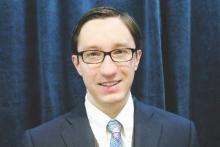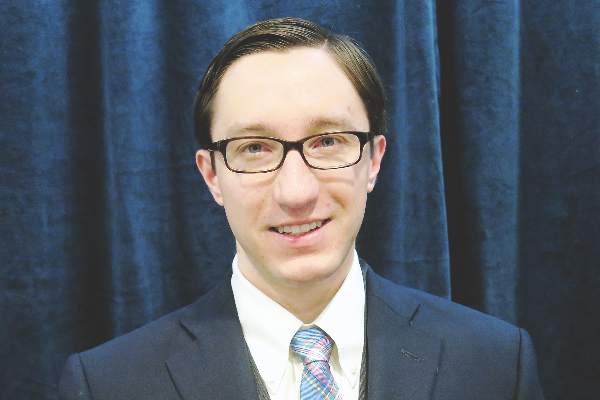User login
SCOTTSDALE, ARIZ. – Patients with head and neck cancer have substantial disparities in presentation, treatment, and outcomes according to their health insurance status, suggest results of a cohort study reported at the Multidisciplinary Head and Neck Cancer Symposium.
The analysis of more than 50,000 patients from the Surveillance, Epidemiology, and End Results (SEER) registry found that relative to counterparts with insurance, those with Medicaid or no insurance had more advanced disease at presentation.
Additionally, the Medicaid and uninsured patients were 23% and 32% less likely, respectively, to receive radiation therapy, and the uninsured were 23% less to receive surgery, according to data reported in a session and related press briefing.
Both overall and cancer-specific survival were worse for these two groups as well. And when compared with each other, the Medicaid patients actually had poorer overall survival than the uninsured, and similar cause-specific survival.
“We noted important disparities among Medicaid and uninsured cancer patients with head and neck malignancies in the United States,” said lead author Dr. Thomas M. Churilla of the Fox Chase Cancer Center in Philadelphia. “We hypothesize that lack of access to primary care and dental providers may be one of the reasons why patients are presenting with more locally advanced disease.”
The Patient Protection and Affordable Care Act aims to address lack of insurance in part by expanding Medicaid, he noted. However, “given the excess in cancer mortality seen in the Medicaid group and striking similarity with the uninsured group, expansions in Medicaid may have limited effect on outcomes among head and neck cancer patients without further study into figuring out which patient, provider, and health care system factors may be underlying these differences.”
Press briefing moderator Dr. Randall J. Kimple of the University of Wisconsin–Madison, asked, “In your data set, do you have any information on the length of insurance coverage? We see a fair number of patients who come in with no insurance but ultimately get enrolled in Medicaid. Would they have been included in the Medicaid group or the insured group in this study?”
The SEER database does not provide that information, Dr. Churilla said. “The inability to tell the length of insurance coverage is an important limitation of our study, and it may limit our inferences to tell the difference between these two groups,” he acknowledged, adding that the database also lacks information about other important potential confounders, including systemic therapies; risk factors such as smoking, alcohol intake, and human papillomavirus status; and the size, type, and experience of the treating center.
A session attendee said, “You showed that uninsured patients did better than Medicaid patients. Is this possibly due to the uninsured getting free care rather than [clinicians] needing to follow Medicaid-approved treatment?”
“We are scratching our heads a little bit with this one as well, but I think some of the difference may be due in part to the age differences,” Dr. Churilla replied. “The Medicaid patients on average were older than uninsured patients, so perhaps more competing causes of death leading to a difference in overall survival yet similar cancer-specific survival.”
For the study, the investigators analyzed outcomes among 53,848 patients who had primary squamous cell carcinoma of the oral cavity, pharynx, or larynx diagnosed during 2007-2012. Overall, 80% were insured (through private insurance or Medicare), 15% had Medicaid, and 5% were uninsured.
Results showed that patients with Medicaid or no insurance had more advanced cancer at presentation than insured peers. For example, 56% and 59% of patients with Medicaid and no insurance, respectively, had stage 4 disease, compared with 43% of insured patients.
In multivariate analyses adjusted for socioeconomic characteristics, clinical factors (including stage), and treatments, the likelihood of receiving external-beam radiation therapy was lower for the Medicaid group (hazard ratio, 0.77; P less than .001) and the uninsured group (HR, 0.68; P less than .001). Additionally, the uninsured were less likely to receive cancer-directed surgery, defined as at least a wide local excision (HR, 0.77; P less than .001).
In addition, both Medicaid and uninsured patients had poorer overall survival (HRs, 1.54 and 1.49) and cancer-specific survival (HRs, 1.59 and 1.66) relative to insured counterparts.
Findings were generally the same after propensity score weighting and in a sensitivity analysis that excluded all patients aged 65 or older because of their Medicare eligibility.
Addressing the observed disparities for the uninsured patients will require action on both the clinician and policy levels, Dr. Churilla said.
“One of the first steps is awareness among both dental and medical communities and trying to provide social services and financial counseling to help these patients enroll in certain programs such as Medicaid that they may be eligible for,” he elaborated. “And then I think the rest of it really lies with national policy – how do we expand coverage to help get these people the health care that they need and the appropriate services that they require.”
SCOTTSDALE, ARIZ. – Patients with head and neck cancer have substantial disparities in presentation, treatment, and outcomes according to their health insurance status, suggest results of a cohort study reported at the Multidisciplinary Head and Neck Cancer Symposium.
The analysis of more than 50,000 patients from the Surveillance, Epidemiology, and End Results (SEER) registry found that relative to counterparts with insurance, those with Medicaid or no insurance had more advanced disease at presentation.
Additionally, the Medicaid and uninsured patients were 23% and 32% less likely, respectively, to receive radiation therapy, and the uninsured were 23% less to receive surgery, according to data reported in a session and related press briefing.
Both overall and cancer-specific survival were worse for these two groups as well. And when compared with each other, the Medicaid patients actually had poorer overall survival than the uninsured, and similar cause-specific survival.
“We noted important disparities among Medicaid and uninsured cancer patients with head and neck malignancies in the United States,” said lead author Dr. Thomas M. Churilla of the Fox Chase Cancer Center in Philadelphia. “We hypothesize that lack of access to primary care and dental providers may be one of the reasons why patients are presenting with more locally advanced disease.”
The Patient Protection and Affordable Care Act aims to address lack of insurance in part by expanding Medicaid, he noted. However, “given the excess in cancer mortality seen in the Medicaid group and striking similarity with the uninsured group, expansions in Medicaid may have limited effect on outcomes among head and neck cancer patients without further study into figuring out which patient, provider, and health care system factors may be underlying these differences.”
Press briefing moderator Dr. Randall J. Kimple of the University of Wisconsin–Madison, asked, “In your data set, do you have any information on the length of insurance coverage? We see a fair number of patients who come in with no insurance but ultimately get enrolled in Medicaid. Would they have been included in the Medicaid group or the insured group in this study?”
The SEER database does not provide that information, Dr. Churilla said. “The inability to tell the length of insurance coverage is an important limitation of our study, and it may limit our inferences to tell the difference between these two groups,” he acknowledged, adding that the database also lacks information about other important potential confounders, including systemic therapies; risk factors such as smoking, alcohol intake, and human papillomavirus status; and the size, type, and experience of the treating center.
A session attendee said, “You showed that uninsured patients did better than Medicaid patients. Is this possibly due to the uninsured getting free care rather than [clinicians] needing to follow Medicaid-approved treatment?”
“We are scratching our heads a little bit with this one as well, but I think some of the difference may be due in part to the age differences,” Dr. Churilla replied. “The Medicaid patients on average were older than uninsured patients, so perhaps more competing causes of death leading to a difference in overall survival yet similar cancer-specific survival.”
For the study, the investigators analyzed outcomes among 53,848 patients who had primary squamous cell carcinoma of the oral cavity, pharynx, or larynx diagnosed during 2007-2012. Overall, 80% were insured (through private insurance or Medicare), 15% had Medicaid, and 5% were uninsured.
Results showed that patients with Medicaid or no insurance had more advanced cancer at presentation than insured peers. For example, 56% and 59% of patients with Medicaid and no insurance, respectively, had stage 4 disease, compared with 43% of insured patients.
In multivariate analyses adjusted for socioeconomic characteristics, clinical factors (including stage), and treatments, the likelihood of receiving external-beam radiation therapy was lower for the Medicaid group (hazard ratio, 0.77; P less than .001) and the uninsured group (HR, 0.68; P less than .001). Additionally, the uninsured were less likely to receive cancer-directed surgery, defined as at least a wide local excision (HR, 0.77; P less than .001).
In addition, both Medicaid and uninsured patients had poorer overall survival (HRs, 1.54 and 1.49) and cancer-specific survival (HRs, 1.59 and 1.66) relative to insured counterparts.
Findings were generally the same after propensity score weighting and in a sensitivity analysis that excluded all patients aged 65 or older because of their Medicare eligibility.
Addressing the observed disparities for the uninsured patients will require action on both the clinician and policy levels, Dr. Churilla said.
“One of the first steps is awareness among both dental and medical communities and trying to provide social services and financial counseling to help these patients enroll in certain programs such as Medicaid that they may be eligible for,” he elaborated. “And then I think the rest of it really lies with national policy – how do we expand coverage to help get these people the health care that they need and the appropriate services that they require.”
SCOTTSDALE, ARIZ. – Patients with head and neck cancer have substantial disparities in presentation, treatment, and outcomes according to their health insurance status, suggest results of a cohort study reported at the Multidisciplinary Head and Neck Cancer Symposium.
The analysis of more than 50,000 patients from the Surveillance, Epidemiology, and End Results (SEER) registry found that relative to counterparts with insurance, those with Medicaid or no insurance had more advanced disease at presentation.
Additionally, the Medicaid and uninsured patients were 23% and 32% less likely, respectively, to receive radiation therapy, and the uninsured were 23% less to receive surgery, according to data reported in a session and related press briefing.
Both overall and cancer-specific survival were worse for these two groups as well. And when compared with each other, the Medicaid patients actually had poorer overall survival than the uninsured, and similar cause-specific survival.
“We noted important disparities among Medicaid and uninsured cancer patients with head and neck malignancies in the United States,” said lead author Dr. Thomas M. Churilla of the Fox Chase Cancer Center in Philadelphia. “We hypothesize that lack of access to primary care and dental providers may be one of the reasons why patients are presenting with more locally advanced disease.”
The Patient Protection and Affordable Care Act aims to address lack of insurance in part by expanding Medicaid, he noted. However, “given the excess in cancer mortality seen in the Medicaid group and striking similarity with the uninsured group, expansions in Medicaid may have limited effect on outcomes among head and neck cancer patients without further study into figuring out which patient, provider, and health care system factors may be underlying these differences.”
Press briefing moderator Dr. Randall J. Kimple of the University of Wisconsin–Madison, asked, “In your data set, do you have any information on the length of insurance coverage? We see a fair number of patients who come in with no insurance but ultimately get enrolled in Medicaid. Would they have been included in the Medicaid group or the insured group in this study?”
The SEER database does not provide that information, Dr. Churilla said. “The inability to tell the length of insurance coverage is an important limitation of our study, and it may limit our inferences to tell the difference between these two groups,” he acknowledged, adding that the database also lacks information about other important potential confounders, including systemic therapies; risk factors such as smoking, alcohol intake, and human papillomavirus status; and the size, type, and experience of the treating center.
A session attendee said, “You showed that uninsured patients did better than Medicaid patients. Is this possibly due to the uninsured getting free care rather than [clinicians] needing to follow Medicaid-approved treatment?”
“We are scratching our heads a little bit with this one as well, but I think some of the difference may be due in part to the age differences,” Dr. Churilla replied. “The Medicaid patients on average were older than uninsured patients, so perhaps more competing causes of death leading to a difference in overall survival yet similar cancer-specific survival.”
For the study, the investigators analyzed outcomes among 53,848 patients who had primary squamous cell carcinoma of the oral cavity, pharynx, or larynx diagnosed during 2007-2012. Overall, 80% were insured (through private insurance or Medicare), 15% had Medicaid, and 5% were uninsured.
Results showed that patients with Medicaid or no insurance had more advanced cancer at presentation than insured peers. For example, 56% and 59% of patients with Medicaid and no insurance, respectively, had stage 4 disease, compared with 43% of insured patients.
In multivariate analyses adjusted for socioeconomic characteristics, clinical factors (including stage), and treatments, the likelihood of receiving external-beam radiation therapy was lower for the Medicaid group (hazard ratio, 0.77; P less than .001) and the uninsured group (HR, 0.68; P less than .001). Additionally, the uninsured were less likely to receive cancer-directed surgery, defined as at least a wide local excision (HR, 0.77; P less than .001).
In addition, both Medicaid and uninsured patients had poorer overall survival (HRs, 1.54 and 1.49) and cancer-specific survival (HRs, 1.59 and 1.66) relative to insured counterparts.
Findings were generally the same after propensity score weighting and in a sensitivity analysis that excluded all patients aged 65 or older because of their Medicare eligibility.
Addressing the observed disparities for the uninsured patients will require action on both the clinician and policy levels, Dr. Churilla said.
“One of the first steps is awareness among both dental and medical communities and trying to provide social services and financial counseling to help these patients enroll in certain programs such as Medicaid that they may be eligible for,” he elaborated. “And then I think the rest of it really lies with national policy – how do we expand coverage to help get these people the health care that they need and the appropriate services that they require.”
AT THE HEAD AND NECK CANCER SYMPOSIUM
Key clinical point: Patients with Medicaid or no insurance are less likely to receive certain treatments and more likely to die.
Major finding: Compared with insured counterparts, Medicaid and uninsured patients were 23%-32% less likely to receive radiation therapy, and the uninsured were also 23% less likely to receive surgery.
Data source: A cohort study of 53,848 patients from the SEER database treated for head and neck cancer.
Disclosures: Dr. Churilla disclosed that he had no relevant conflicts of interest.


